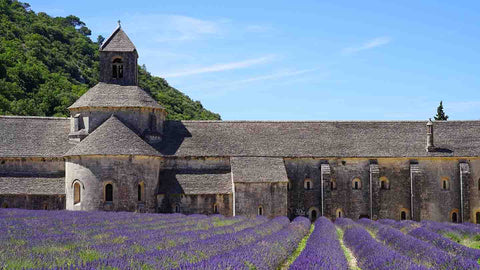Courtesy of Panier des Sens.com

Lavender, known for its calming scent and delicate purple flowers, has a rich history deeply rooted in the Mediterranean region. Revered by ancient civilizations like the Romans, Greeks, and Egyptians, it held various symbolic and practical uses.
The plant’s name derives from the Latin word “lavare” meaning “to wash,” highlighting its historical role in cleansing rituals. The Egyptians, for instance, used Lavender in their embalming process, and the lavender flower was often associated with purification and healing.
The Greeks called it « Nardus » after the Syrian city of Naarda, and it was mentioned in their literature and medicine. Lavender’s therapeutic qualities were appreciated by both the Greeks and the Romans.
During the Roman era, lavender became a symbol of luxury and relaxation. They used it to scent baths and clothes. Lavender’s popularity spread across Europe in the Middle Ages, where it was used for medicinal and culinary purposes and became a symbol of cleanliness and refinement.
Today, lavender is cultivated worldwide, with countries like France, Bulgaria, and England being renowned for their lavender fields. Lavender’s popularity endures, with its essence widely utilized in aromatherapy, cosmetics, and culinary ventures, showcasing its timeless allure and versatility.
Embracing the Beauty of Lavender
Lavender has undoubtedly earned its place in the realm of cosmetics. Its numerous benefits for the skin, coupled with its delightful aroma, make it a sought-after ingredient in a wide range of products. From lavender-infused lotions and creams to shampoos and perfumes, there are countless ways to incorporate this magnificent herb into your beauty routine. Whether you enjoy the relaxation it brings or the rejuvenation it offers, lavender is sure to enhance your self-care rituals.
Learn About the History of Lavender in Sequim!
How One Small Town Became the ‘Lavender Capital of North America’ (treehugger.com)

